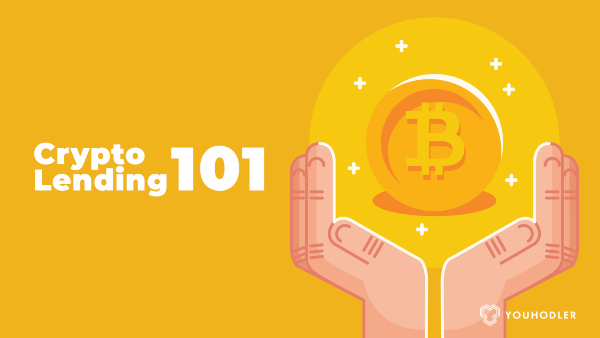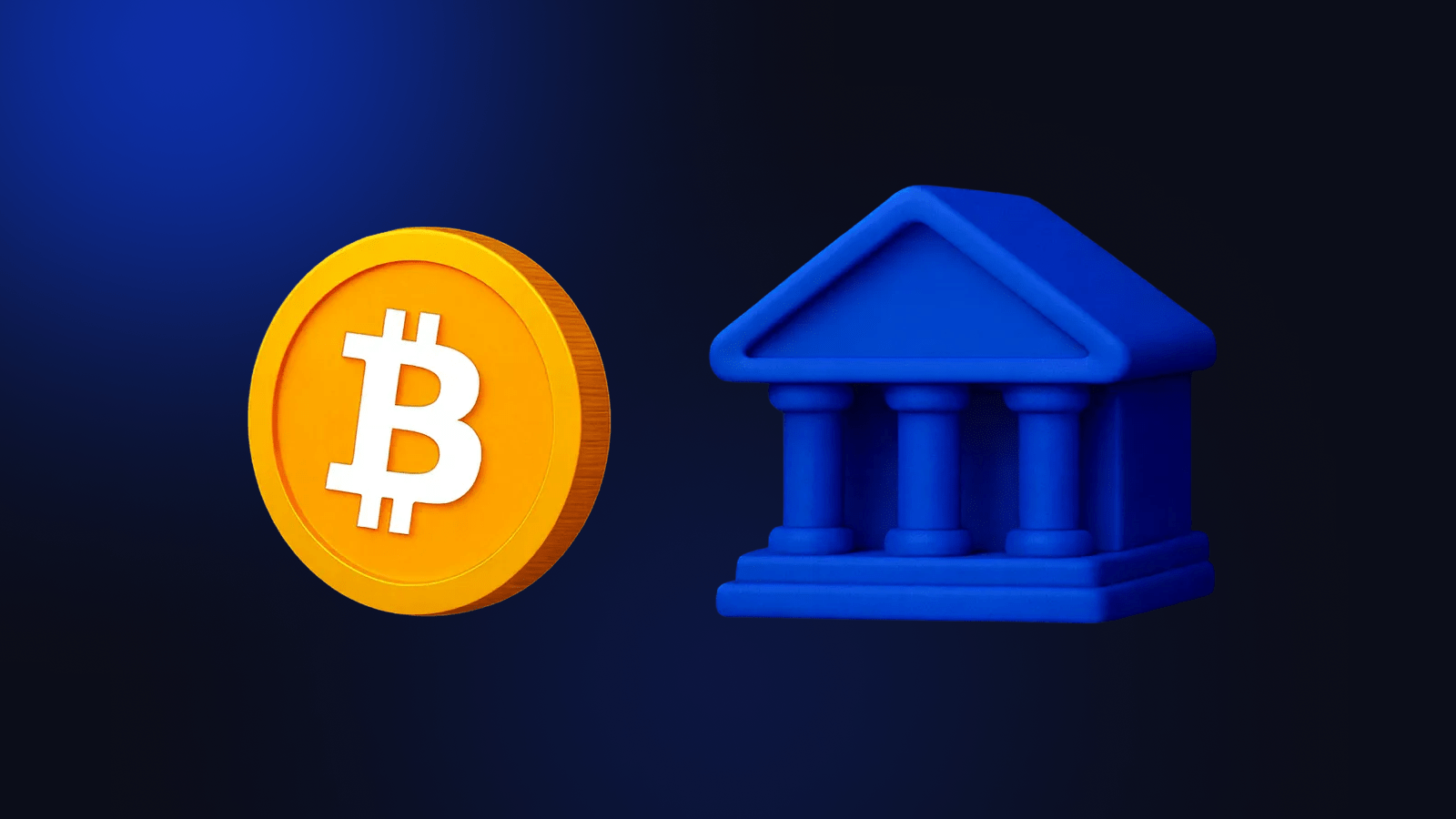Crypto Lending 101 - All Lending Jargon Explained

Has the term "Crypto Lending" got you all interested and hyped up about the crypto industry? You are not alone, as crypto lending is playing a monumental role in attracting new users to the crypto world, providing instant loans compared to the much slower banking processes.
However, are you feeling lost by the technical jargon used to describe crypto lending or lending in general? Don’t worry as we have compiled this article to help you understand all lending-related jargon. Furthermore, we’ll explain all terms and concepts related to crypto lending in this post.
Let's dive into the two main aspects of the crypto lending market before we move into more technical terms related to crypto lending. These two main aspects of crypto lending are cryptocurrency borrowing and cryptocurrency lending.
Defining the Relationship Between Crypto Lending and Crypto Borrowing
Cryptocurrency borrowing means that a user borrows cryptocurrency as a loan. The reason for taking a crypto loan can be anything from starting a business, paying a downpayment to buy a house, or for making an interesting trade.
On the other hand, cryptocurrency lending means that someone lends their cryptocurrency as a loan. These lenders lend their cryptocurrency as a loan to the borrowers to earn interest on it. It has become a popular way to use passive crypto holdings and at the same time, you can earn interest on them.
Interested in Decentralized Finance? Read our ultimate DeFi guide.
Term #1: Collateral and Default
To secure a loan from a lender, a borrower usually has to pledge any of its valuable assets. For crypto lending in particular, you can deposit many different cryptocurrencies such as Bitcoin, Ethereum, Binance Token, Stellar, … (see a full list of collateral options).
You might wonder why collateral is needed? A lender asks for collateral as they could liquidate it in case of a default by the borrower. A default means that the borrower is unable to pay back the agreed amount.
Collateral is a way of reducing the lender's risk if a borrower fails to hold up to their end of the deal. The advantage of crypto lending is that a borrower can collateralize holding stablecoins to receive a loan.
Term #2: Liquidation
Liquidation is a process of converting your assets into cash or its equivalent, after selling your assets in an open market. For crypto lending, liquidation denotes the process that a crypto lender adopts when a crypto borrower defaults on their loan. In the case of default on the part of a crypto borrower, the lender sells the crypto or stablecoin collateralized at the time of borrowing.
Term #3: LTV (Loan-to-Value)
The Loan-to-Value ratio is a term that represents the ratio of loan to the collateralized asset value. It can also be described as the percent amount of loan a borrower can receive by collateralizing their crypto assets. It is always expressed in percentage terms.
Crypto lending works differently from how traditional lending works. LTV can be calculated by dividing the loan amount by the total value of the collateral.
In traditional lending, the banks decide the loan value based on the borrower's credit score. However, crypto lending does not involve any credit profiling to decide the loan amount that a borrower can take from lenders. Hence, crypto lending platforms such as YouHodler provide asset-backed loans to crypto borrowers.
Currently, YouHodler is offering an LTV ratio of up to 90% for short-term loans. It means that a borrower can receive a bigger loan for the same amount of collateralized crypto.
Term #4: Annual Percentage Return
APR or Annual Percentage Rate is the annual cost of borrowing money or stablecoins from a crypto lending platform. It’s mentioned in terms of percentage and looks like an interest rate. However, APR does a better job of providing an accurate representation of the total cost of your loan.
The good thing about APR is that it also includes other fees associated with the loan amount. It includes origination fees, closing fees, or any other relevant fees.
Are you wondering about the average APR in the crypto lending space? It depends on the lender and the type of crypto you are collateralizing. Additionally, the APR offered by a crypto lending platform is also dependent on if you want to borrow stablecoins or fiat currency.
Term #5: Price Down Limit
A crypto lending platform sets a certain level of price for each cryptocurrency they accept as collateral. Each of the crypto lending platforms notes about "Price Down Limit" in their agreement. The agreement states that if the collateral's price goes below the "Price Down Limit," they reserve the right to sell the collateral cryptocurrency.
It doesn't mean that the borrowers are at a loss here, and neither do they have to pay anything more. A borrower is already at the end of a better deal here as their coins get sold at comparatively better prices. The borrower is notified of a potential price down limit event after the value of the borrower's collateral drops to two-thirds of the “price down limit”.
Term #6: Loan Repayment
The act of paying back the loan amount borrowed from a lender is known as repayment. It includes both the principal amount and interest. Typically, the loan repayment is spread across months or years. However, crypto lending platforms also allow a borrower to repay the loan borrowed in a lump sum amount.
Term #7: Principal
Principal in lending terminology means the amount that a borrower pays the lender when the loan becomes due. It’s to be noted that the principal doesn’t include interest. When a borrower takes out a crypto loan, their payment consists of two parts. These are the principal and interest.
The amount you borrow and the loan principal are the same but it keeps going down as you keep paying back. On the other hand, interest is the amount that you pay as a cost to borrow money.
Why are Crypto Loans Better Than P2P Loans?
When compared to P2P loans, the crypto-based loans are faster to get approval. Crypto loans also offer better rates than P2P loans. A user who is holding on to crypto of their choice can use them to earn interest. At the same time, they can also benefit from the price gains of their crypto holdings.
On the other hand, P2P loans usually only include fiat currency-based lending and borrowing. Hence, there is no benefit in terms of price gains for the borrower. P2P loans do not have as stringent requirements as traditional loans. Yet, crypto loan requirements are more relaxed when compared to the P2P loans.
Recommended read: How safe is peer to peer lending? A risk analysis.
Conclusion: Crypto Lending is the Future?
Crypto lending is playing an important role in attracting more users to the blockchain ecosystem. It has proved to be a beneficial system for both the innovators as well as the general crypto users.
As per a Credmark research report, the volume of crypto-backed loans reached $8 billion in 2019. It means that the volume of crypto-backed loans grew at 700% since its inception. We expect that the crypto lending still has a long way to go. It will grow further and will attract more users and investors on its way.
Take a look at YouHodler’s lending offer. We provide instant fiat and crypto loans, collateralized by the top 20 coins. We can offer you instant cash via our own fiat fund.
faq quetstion
.svg)
Suggested Posts



YouHodler is regulated in Switzerland, the EU and Argentina.
YouHodler SA
Registered financial intermediary
YouHodler Italy S.R.L.
VASP registered at OAM / MICAR
YouHodler SA
Registered as VASP with Banco de España
YouHodler SA Branch in Argentina.
Registered as a VASP with the CNV.








